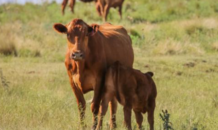
As the cold weather begins to settle in and the demand for firewood increases, the Kansas Department of Agriculture (KDA), encourages Kansas citizens to educate themselves and others about firewood transportation in the state.
MANHATTAN, Kan. – As the cold weather begins to settle in and the demand for firewood increases, the Kansas Department of Agriculture (KDA), encourages Kansas citizens to educate themselves and others about firewood transportation in the state.
While it may seem harmless on the surface, transporting firewood can pose a threat to healthy, pest-free trees across the state of Kansas. Tree-killing insects and diseases can lurk in what appears to be harmless firewood. These pests and diseases can then quickly spread and infest trees into additional locations.
Firewood that has been heat treated, packaged and labeled with the United States Department of Agriculture (USDA) APHIS treatment seal is considered safe to move. Do not consider other labels such as “kiln-dried” a safe alternative.
Wyandotte, Johnson and Leavenworth counties all prohibit the transportation of firewood outside of county borders. The purpose of this quarantine is to prevent the further spread of the emerald ash borer. This insect disrupts the tree’s ability to transport water and nutrients, which causes it to die. The emerald ash borer and other harmful diseases including Thousand Cankers of Walnut and Pine Wilt are of concern to homeowners and foresters. It is up to Kansas citizens to help slow the movement of these pests and diseases.
“It is imperative to take initiative when moving firewood,” said Jeff Vogel, KDA Plant Protection and Weed Control program manager. “Preventing destructive pests is important not only for the health of our trees, but also for our economy.” It is estimated by the USDA Forest Service that from 2009 to 2019 that the response to eliminating the Emerald Ash Borer will cost almost $10.7 billion.
Keep warm this chilly season, but also remember to follow these simple guidelines and ultimately only burning firewood in the immediate area where it is purchased.
To learn more about the facts and general information of firewood transportation, visit http://www.dontmovefirewood.org/.




